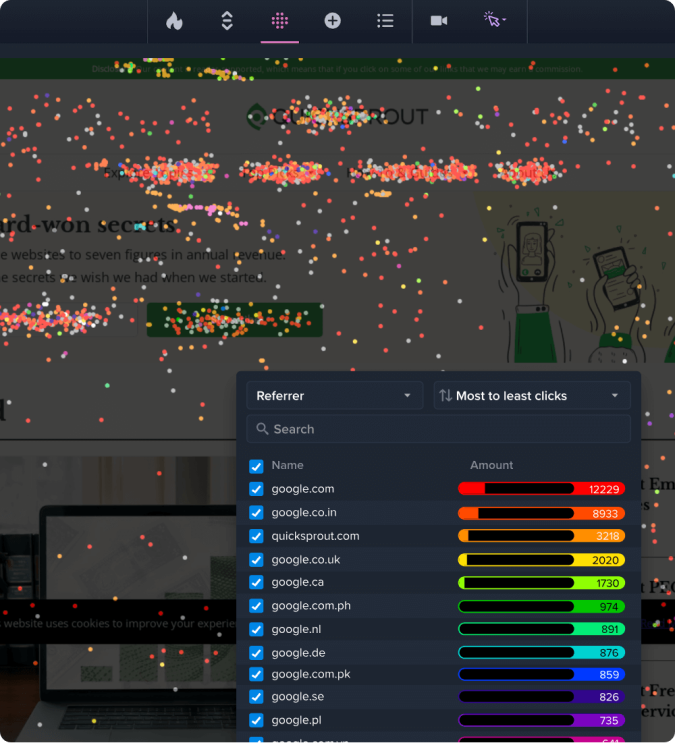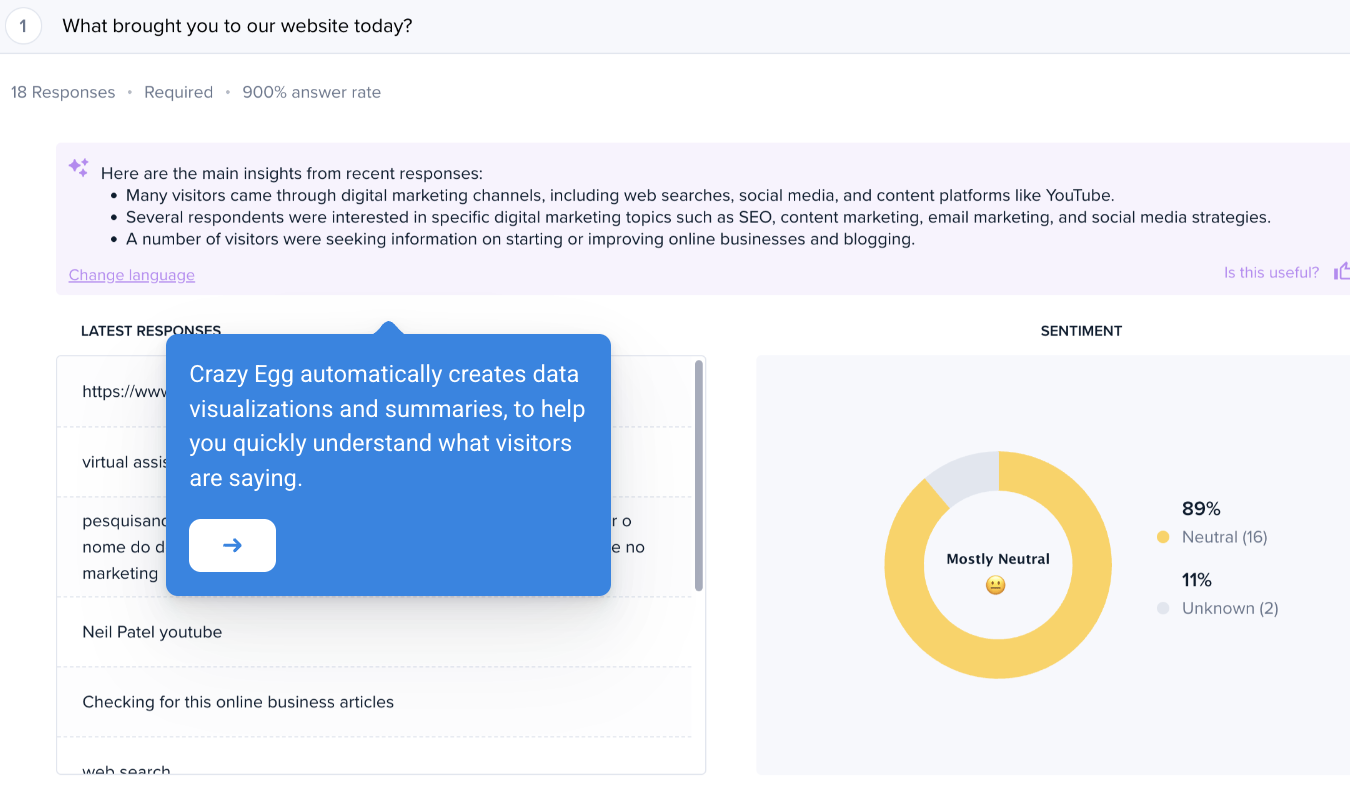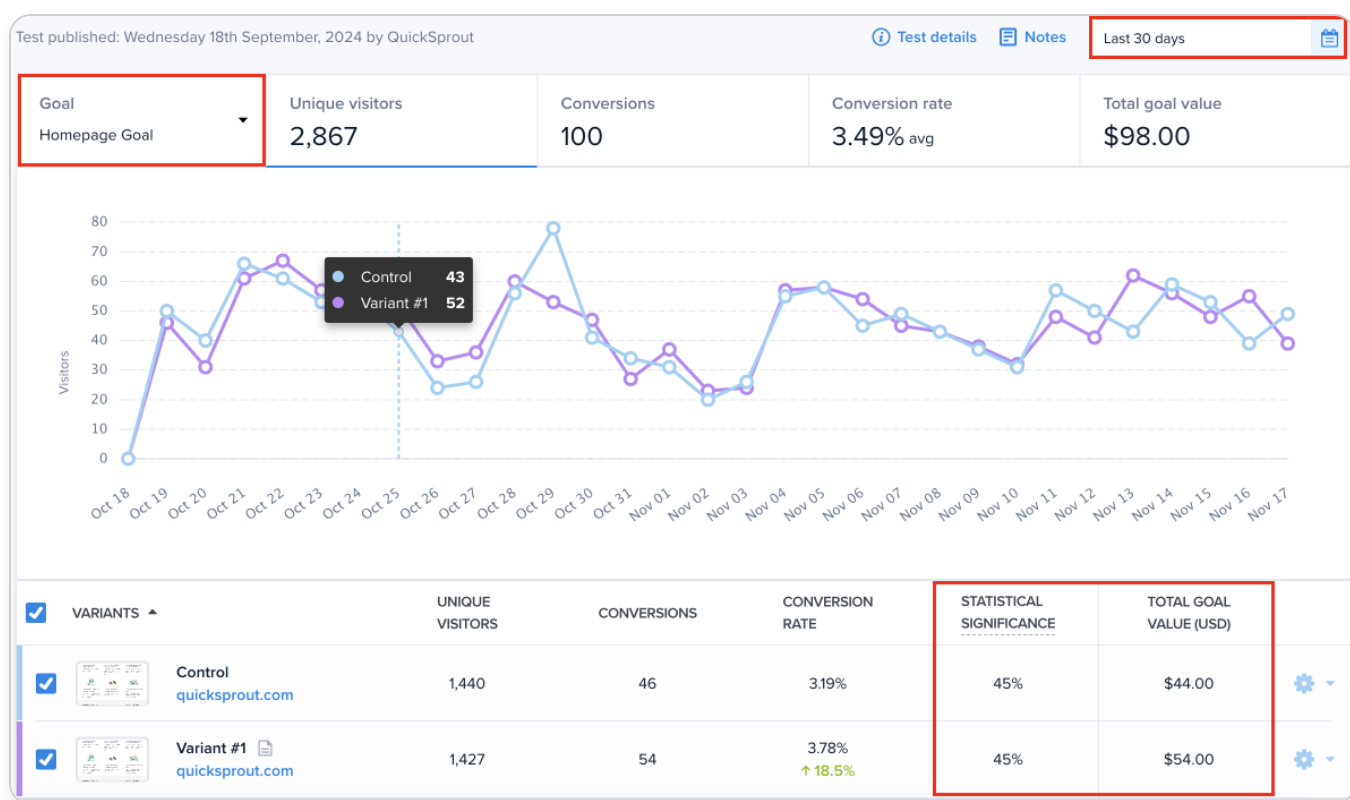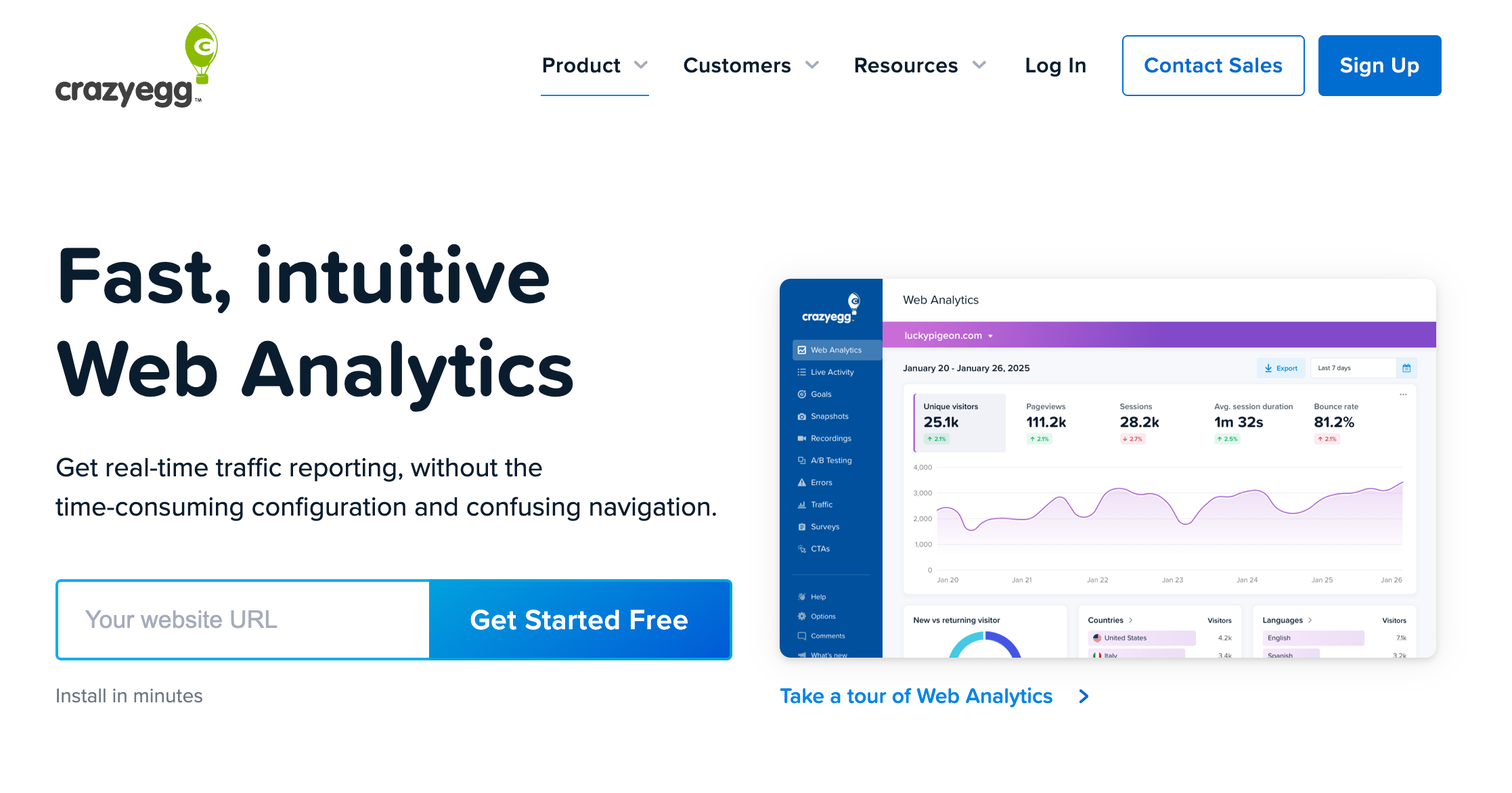A high bounce rate means a lot of people leave your site after seeing just one page. It looks ugly in the analytics, but it doesn’t always mean your site is broken.
Here’s how you know if the bounce rate is high enough to worry about, and how to bring that number down without tearing everything up.
What Is a High Bounce Rate?
A bounce is when someone visits your site and leaves without completing another action. Technically, a visit is counted as a bounce when the user:
- Stays less than 10 seconds
- Doesn’t visit another page or screen
- Doesn’t click a link or trigger a conversion event
Your bounce rate compares the number of visitors who bounce to the total number of visitors on the site over a specific time frame. For example:
- If 1,000 total people visited your site last week
- And 378 visitors bounced
- Your site’s bounce rate would be 37.8%
A high bounce rate is when the percentage of visitors bouncing indicates that there is a problem with your site. This is usually because:
- The bounce rate has trended higher than its typical level.
- The bounce rate increased suddenly.
- The bounce rate is significantly higher than similar pages.
- The bounce rate is significantly higher for a particular traffic segment.
Notice that I did not say that a high bounce rate is a specific percentage.
There is no specific number that tells you for certain, across all websites, that the bounce rate is too high.
High bounce rates always need context
You will see people say things like “you should definitely worry about your bounce rate if it goes over 70%” or that “a bounce rate of less than 30% means your site is doing a great job.”
Both of those statements could be true, but without context, we can’t say for sure.
The way I see it, a “high” bounce rate is always in relation to a web page’s normal baselines.
If a page has a bounce rate that hovers between 40-50%, and it shoots up to 70%, that’s worth checking out.
Similarly, if you notice that the bounce rate for mobile devices is twice as high compared to desktop devices, I would look into it.
I’m not really worried about the bounce rate as a particular percentage so much as I worry when it changes dramatically, or if it seems at odds with historic web page performance.
What about industry data on bounce rates?
I wouldn’t put too much stock in industry averages or general guidance. There’s plenty of data out there, but no reason to believe that it will fit your specific site.
And it’s always too vague to provide any sort of meaningful guidance. For example, I read in a few different places that the average bounce rate for ecommerce is 20-45%.
Okay. What can you do with that? There is zero guarantee that bringing your bounce rate within that average will provide any meaningful benefit to your business.
Chasing an arbitrary bounce rate percentage is just not a good use of time. After all, you could drive the bounce rate to zero and not see a single new sale. There are much more valuable customer engagement metrics to focus on.
Why Do People Care About High Bounce Rates?
Three reasons:
- It’s a leading indicator. A bounce rate will suffer long before revenue, so it gives people a chance to get ahead of an issue that will only surface in the hard numbers 30+ days later.
- Sudden spikes in the bounce rate can indicate a performance issue. They serve as immediate warning signs that something is broken on your site and it’s causing people to leave quickly. It could be as simple as slow page load time or a broken image that makes people think your site is not credible immediately.
- A long-term increase in the bounce rate can indicate a content issue. Fewer people wanting to engage could mean that your messaging has gone stale or user expectations have shifted, and now the content on your site is not compelling enough to stay.
In both these cases, the increase in bounce rate suggests that your site is no longer giving people what they want.
When a high bounce rate is tied to a performance issue, it’s usually a fairly quick fix. There are plenty of easy ways to speed up your site, and most broken elements are trivial to restore.
For longer term issues with a rising bounce rate, you may have to revise the copywriting and images on your website to make sure you are still connecting with your target market.
Last year’s headline could be falling flat with today’s audience. Your competitors’ messaging strategy might be better attuned to the current pain points top of mind for customers.
Either way, you are not going to have to redesign your site in order to address the bounce rate. A simple content refresh or CRO audit of the page will probably do the trick.
The fun part is figuring out what, specifically, is causing the high bounce rate.
Where Can I Find the Bounce Rate?
If you are using Google Analytics 4 (GA4) to track activity on your website, you will notice that bounce rate isn’t featured as a headline website KPI in dashboards by default.
Instead, GA4 focuses on engagement rate, which is the percentage of sessions that were meaningfully active. Google defines a session as engaged if it lasts longer than 10 seconds, includes a conversion event, or has two or more page or screen views.
In other words, bounce rate is the inverse of the engagement rate:
Bounce rate = 100% – engagement rate
You won’t see bounce rate by default in GA4 reports, but you can add it as a metric to standard reports or find it under the “Engagement” reporting menus. Learn more about how to customize your GA4 dashboard.
You are also free to just use the engagement rate to make the same sort of decisions. If the engagement rate is dropping, it tells you the same basic information as a bounce rate that is rising.
How To Identify the Cause of a High Bounce Rate
Let’s assume that your website bounce rate is bad. It’s deviated enough from the normal baseline that you have good cause to be worried.
Here’s what I would do.
Start with a quick technical audit
This should take 5-10 minutes, potentially a little more if you do find an issue.
- Hand test the page on desktop and mobile. I would load the page and look for anything off with a quick scan, ensuring links and interactive features work.
- See if any recent changes were made to the page. Look at the page edit history to see if the bad bounce rate is tied to a recent update.
- Inspect the page performance in Chrome by opening the Network function of the Inspect tool and reloading the page.
- Enter the page URL into Google PageSpeed Insights to see Core Web Vitals and a rundown of performance issues.
I’d go in this order, too. Sudden spikes in bounce rate are necessarily impacting the user experience within the first ten seconds. A lot of the time, it will be immediately obvious to you.
Did someone recently edit the page and break something? That’s probably it.
Did the page take 5 seconds to load? That’s bad and it is almost certainly causing people to bounce.
Did you see a pixilated image, an egregious typo, or a navigation menu smushed together? All of those are bad and make your site look sketchy or unprofessional, causing people to leave.
Using SEO or analytics tools can help you pick up additional issues when you can’t discover what’s wrong with your site. PageSpeed Insights (pictured below) will tell you what is wrong with your site from a performance standpoint and how to fix it.

Many of the issues identified by PageSpeed Insights are not going to be worth fixing. Obviously it’d be great if everything was perfectly tuned, but the truth is that only the really big issues that are dramatically slowing down your site are going to impact the bounce rate.
This is good enough for catching most technical issues that cause users to leave your site immediately. If nothing is jumping out at you yet, it’s time to head to the next step.
Analyze bounce rate by traffic segment
Sometimes a blended bounce rate for all website traffic obscures problems with specific subsets of users.
For example, you may be able to find a technical issue that only impacts certain device types, operating systems, or browsers.
You can also segment by traffic source to see if the bounce rate is higher among people from organic search, paid search, organic social media, paid social media, and so on. You may have to break it down by specific platforms (ie.e Meta Ads vs LinkedIn Ads) to figure out where the real hit to performance is happening.
Once you do find a particular traffic source where the bounce rate has gone up a lot, it’s probably a good time to revisit the assets you have that are bringing traffic to the page via that channel.
For example, if the bounce rate of traffic from paid search has increased, it’s worth looking at the content in the ads. Does the headline, copy, and/or images align with what users find when they click through?
Use behavioral tools for in-depth analysis
If you have done a technical audit and segmented traffic, and you still cannot figure out why the bounce rate is higher than you’d like, behavior analysis tools can help you find clues based on how users interact with your site.
I would not recommend doing this solely to fix a bounce rate issue, as these methods take a little bit of time and training to use well. But if the conversion rate, revenue, or other key website metrics were down along with a sky high bounce rate, using these tools is definitely warranted.
Heatmaps show where visitors click and tap, highlighting areas of attention or frustration. If clicks cluster on a non-clickable element, or if your primary CTA is being ignored in favor of something secondary, that can explain a high bounce rate.
Click maps track the precise location of every user click, which can be important if you notice that users who bounced tried and failed to click. These so-called “dead clicks” won’t count as engagement, even if the user “rage clicks” multiple times on something.
Pictured above is a click map in Crazy Egg (known as the Confetti Report), and you can see how each click has been tied to a specific referrer.

Scroll maps reveal how far down the page people actually go. If the majority of visitors never see your key offer or form because it sits below the fold, you’ll know that layout is not showing users what they came for quick enough. They arrive, don’t see what they want, and leave without scrolling down. Moving important elements higher can directly lower bounce rate.
There are certainly other tools you could bring to bear to analyze user behavior and understand why people are not engaging. But these three will give you a window into the user experience on the page, potentially highlighting where users get frustrated or confused, causing them to leave.
4 Low-Effort Strategies To Fix a High Bounce Rate
All of these strategies will help you fix a range of common issues on your site that are associated with high bounce rates. If you need additional inspiration for what to work on, check out this post that’s all about reducing your bounce rate.
1. Refresh content to match visitor intent
One of the most common reasons for a rising bounce rate is simple: visitors arrive, don’t see what they expected, and leave.
This usually develops gradually rather than overnight, with bounce rate trending upward as your content ages or drifts out of sync with audience needs.
Start by diagnosing whether the issue is broad or isolated. Run some simple traffic analysis to see if.all users are bouncing, or mainly those from a certain channel?
If paid search traffic is underperforming, for example, check whether the ad copy and creative align with the content of the page. A mismatch between the promise in the ad and what visitors actually find is a classic recipe for high bounce rates.
Next, do a little keyword research and compare your page to the top performing pages in search engines results pages (SERPS) for relevant keywords. Are competitors framing the topic differently? Are their titles and descriptions closer to what people want right now?
Beyond search, scan customer reviews, forums, or even social chatter to see how your audience describes their pain points today. Language and priorities shift over time, and content that once hit the mark will feel stale if it no longer matches those expectations.
2. Speed up page load times
Few things drive bounce rates faster than a slow site. Every extra second increases the odds a visitor gives up before the page even renders.
You don’t need a full redesign to increase speed. Just hit all the basic best practices, like:
- Compress large images
- Enable browser caching
- Reduce unnecessary scripts.
- Use a content delivery network (CDN)
If you are doing all of this and the page load speed is still sluggish (say, longer than 2 seconds), I would do a little digging into how to boost speed for your particular content management system. There may be a few platform-specific tricks that can help.
Good website builders help non-developers build pages that are light and fast, but others, especially website builder plugins for WordPress are notorious for creating super heavy, slow web pages. That could be your issue.
3. Make it instantly obvious what to do next
A common reason people bounce is because they don’t see where to go next. If your navigation menu is hidden or cluttered with too many options, or buried below the fold, visitors can’t orient themselves quickly.
If you are in a competitive category where users are actually going to make a purchase, they may have 5 other tabs open to competitor websites. They are not going to hang around on the site that is confusing.
Keep the main menu simple and visible at the top of the page. Use clear labels instead of clever wording, and make sure your most important destinations (like products, pricing, contact, services) are one click away.
Your use of typography elements also play a role in creating a positive first impression that gets people to stay and engage. Use clean, readable fonts with clear hierarchy: bold headlines for orientation, easy-to-scan body copy, and distinct CTAs that guide attention.
You do not have to do anything ground breaking here. Following best practices for website navigation and typography will reduce uncertainty in those critical first few seconds and give visitors a clear path forward.
4. Add trust signals to reinforce credibility
Visitors hesitate when they’re not sure who’s behind a site or whether they can trust it. That uncertainty leads to bounces.
New brands need to be especially attentive to this because buyers today are rightly skeptical. There are a ton of scams and fly-by-night companies out there. Incorporating a few simple trust signals in highly visible areas can help you reassure potential customers that your brand is legitimate.
Think about landing on a page that has trust badges from reputable third-parties and social proof in the form of customer reviews and star-ratings. It’s going to feel credible, instantly.
Making these additions to your site won’t hurt your bounce rate, and a complete absence of trust signals probably will.






